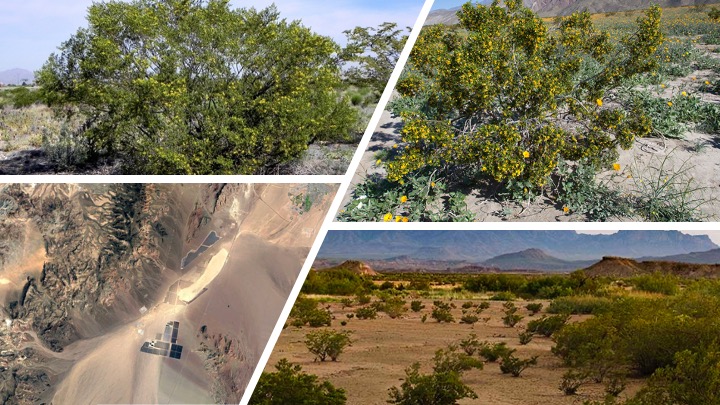Geomorphic Controls on Vegetation
Geomorphic Controls on Vegetation
Mojave Desert Creosote Bush Study

Project Overview
This research represents the largest analysis of creosote bush (Larrea tridentata) to date, examining approximately 23 million individual shrubs. The study investigates how landscape position and local-scale geomorphic features influence canopy volume and shrub spacing in a desert alluvial fan environment.
Key Findings
- Aspect Effects: East-facing surfaces host shrubs up to 5X larger than west-facing surfaces
- Surface Age Impact: Older surfaces exhibit lower interspecific spacing
- Threshold Identification: Discovered transition point between biotic and abiotic control mechanisms
- Spacing Patterns: Documented significant variations across different geomorphic surfaces
Technical Approach
- Remote sensing and ground-truthing
- Analysis of 23 million individual shrubs
- Statistical methods:
- K-S testing
- Distribution fitting
- Generalized linear models (GLMs)
- Geomorphic surface classification
Results
- Canopy Volumes:
- Highest median on east-facing surfaces: 0.758m³
- Lowest median on WNW-facing surfaces: 0.152m³
- Higher variability on east-facing surfaces
- Shrub Spacing:
- Alluvial flat surfaces: 2.418m
- Fan skirt surfaces: 2.333m
- Older surfaces: 1.776m - 1.892m
Publications
James H. Gearon and Michael H. Young. Geomorphic controls on shrub canopy volume and spacing of creosote bush in northern Mojave Desert, USA. Landscape Ecology, 2020.
